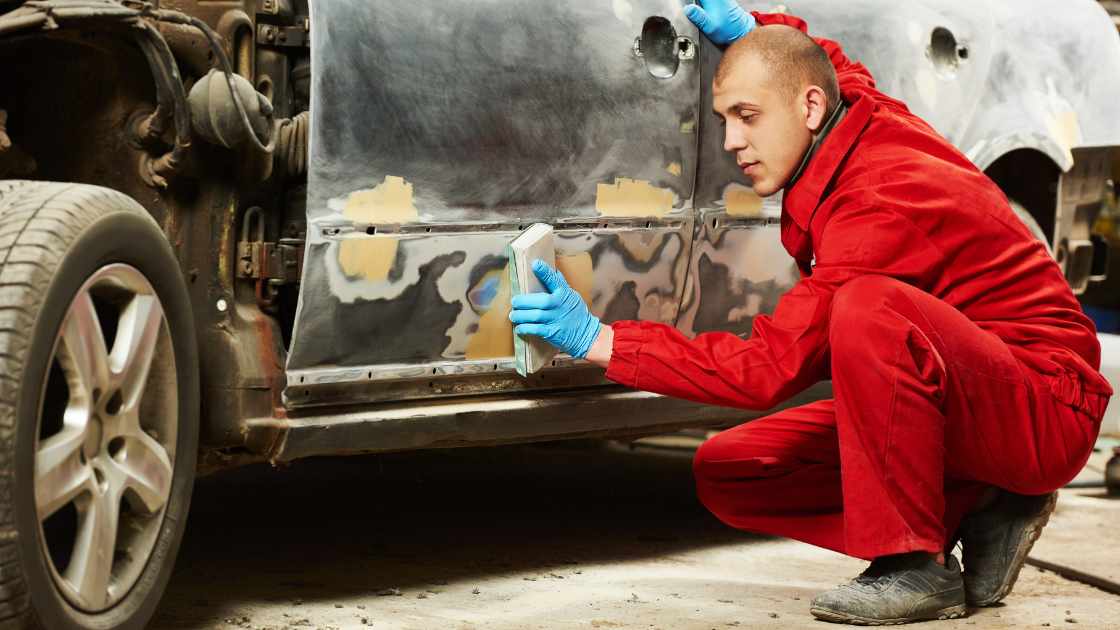Scratches on your car can be a frustrating sight, but fortunately, many minor scratches can be buffed out with the right tools and techniques. Whether it’s a shallow surface scratch or a deeper one, addressing it promptly can prevent further damage and keep your car looking its best. In this guide, we’ll explore how to buff out scratches on your car effectively and restore its shine.
A Guide to Buffing Out Scratches on Your Car
Assess the Damage
Before diving into the buffing process, it’s crucial to assess the extent of the damage. Determine whether the scratch is superficial, affecting only the clear coat, or if it has penetrated the paint layer. Superficial scratches are typically easier to fix and can often be buffed out with minimal effort, while deeper scratches may require more intensive treatment.
Gather the Necessary Supplies
To buff out scratches on your car, you’ll need a few essential supplies, including:
Microfiber cloths
Car wash soap
Water
Rubbing compound
Polishing compound
Buffing pad (either handheld or attached to a buffer)
Car wax
Clean the Area
Start by thoroughly cleaning the scratched area with car wash soap and water. Use a microfiber cloth to gently scrub away any dirt or debris surrounding the scratch. Ensuring the area is clean will prevent further damage during the buffing process.
Apply Rubbing Compound
For superficial scratches, applying a rubbing compound can often eliminate them entirely. Using a clean microfiber cloth, apply a small amount of rubbing compound to the scratched area. Rub the compound in a circular motion, working it into the scratch until it begins to fade. Be sure to follow the manufacturer’s instructions for best results.
Polish the Surface
Once the scratch has been diminished with the rubbing compound, it’s time to polish the surface to restore its shine. Apply a polishing compound to another clean microfiber cloth and buff the area in circular motions. Continue polishing until the surface is smooth and the scratch is no longer visible.
Buffing
For deeper scratches that remain after applying rubbing compound, a buffing pad attached to a buffer can help smooth out the surface. Apply a small amount of polishing compound to the buffing pad and gently buff the scratched area in a back-and-forth motion. Take care not to apply too much pressure, as this can damage the paint.
Apply Wax
After buffing out the scratches, it’s essential to protect the newly restored surface with a layer of car wax. Apply the wax according to the manufacturer’s instructions, using a clean microfiber cloth to spread it evenly over the treated area. Buff the waxed surface to a high shine, leaving your car looking like new.
FAQs
Can all scratches be buffed out of a car’s paint?
Not all scratches can be buffed out, particularly if they have penetrated the paint layer. Shallow surface scratches, however, can often be effectively buffed out using the right techniques and tools. It’s important to assess the depth of the scratch before attempting to buff it out to avoid causing further damage.
What supplies do I need to buff out scratches on my car?
To buff out scratches on your car, you’ll need supplies such as microfiber cloths, car wash soap, water, rubbing compound, polishing compound, a buffing pad (either handheld or attached to a buffer), and car wax. These supplies will help you clean the area, remove scratches, and restore the shine to your car’s paint.
Can I buff out scratches on my car by hand, or do I need a buffer?
Buffing out scratches on a car can be done by hand or with a buffer. For minor scratches and surface imperfections, buffing by hand using microfiber cloths and appropriate compounds can yield satisfactory results. However, deeper scratches may require the use of a buffer equipped with a buffing pad to effectively smooth out the surface and restore the paint’s appearance.
Final Thought
Buffing out scratches on your car can be a straightforward process with the right tools and techniques. By assessing the damage, gathering the necessary supplies, and following a step-by-step approach, you can effectively restore your car’s appearance and keep it looking its best for years to come. Remember to take your time and be patient, as careful attention to detail will yield the best results.

Jeff Gordon is an accomplished writer with expertise in the basics of car accessories. With a keen eye for detail, Jeff has established himself as an authority on the subject, with a passion for all things automotive. Based in Jasper, Jeff is dedicated to providing readers with the information they need to make informed decisions when it comes to their car accessories.




